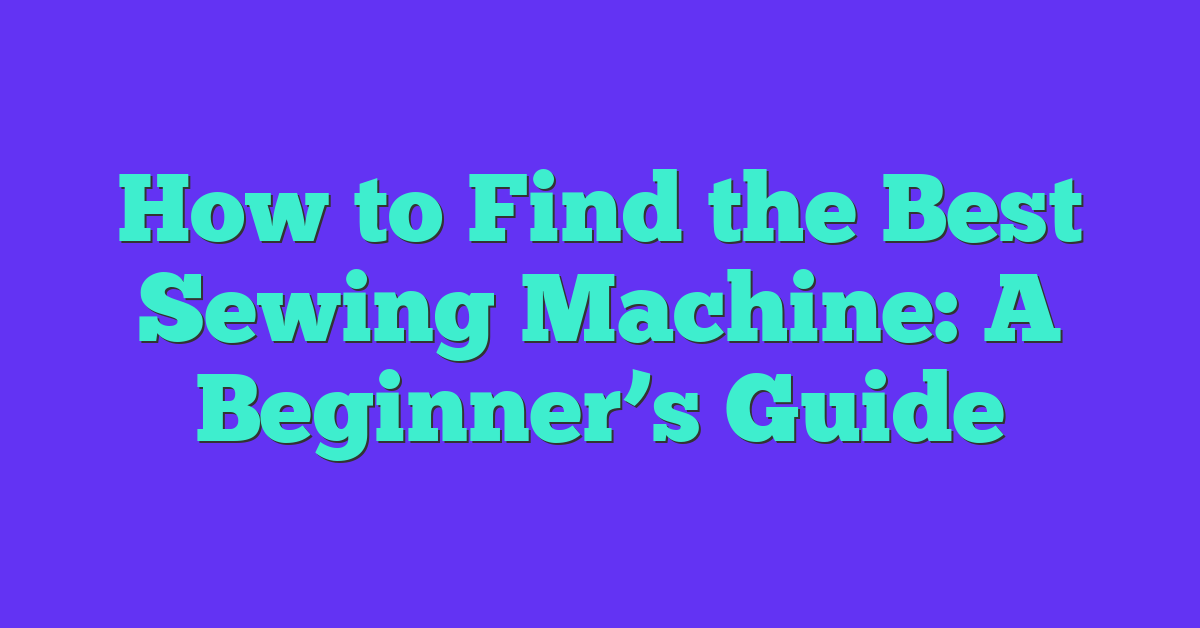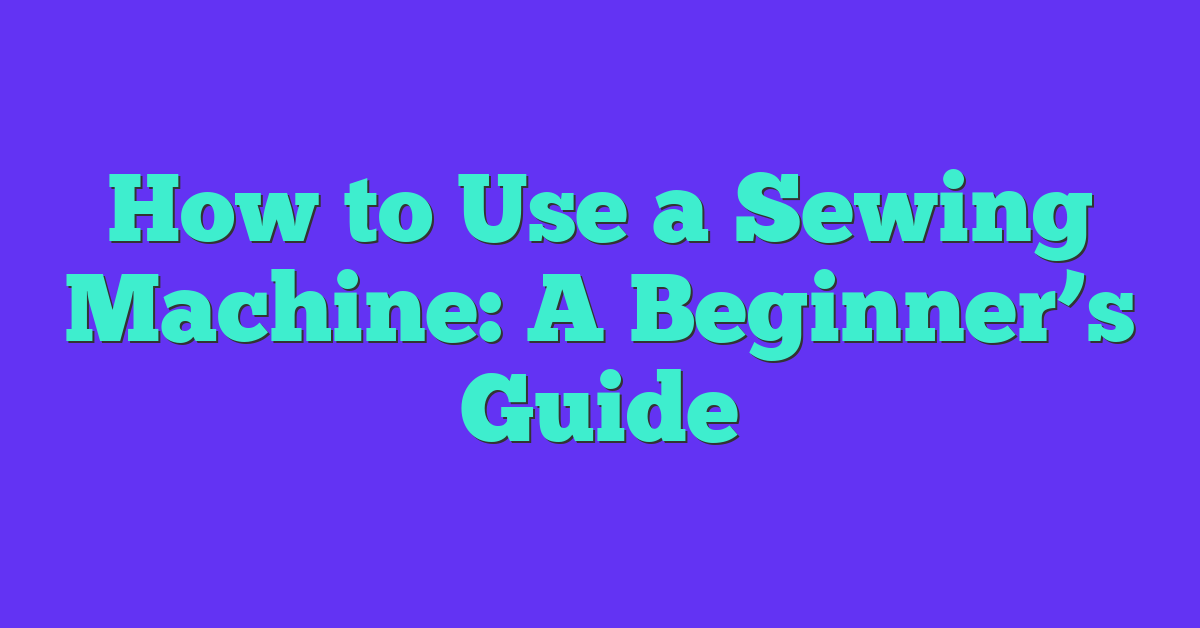Choosing the right needle for your sewing machine can make all the difference in your projects. I’ve found that the perfect needle not only improves stitch quality but also extends the life of your fabric. Whether you’re a beginner or a seasoned sewist, understanding needle types is essential.
In this guide, I’ll walk you through the different needles available and how to match them to your specific sewing needs. Let’s ensure your next creation comes out flawless by picking the right needle every time.
Understanding Sewing Machine Needles
Choosing the right sewing machine needle ensures smooth stitching and protects your fabric. Let’s explore the different types and sizes available.
Types Of Needles
Universal Needles: Suitable for most fabrics, including cotton, linen, and lightweight synthetics. They feature a slightly rounded point.
Ballpoint Needles: Designed for knit fabrics, preventing fabric runs by sliding between threads. Ideal for jersey, fleece, and other stretchy materials.
Sharp Needles: Perfect for tightly woven fabrics like denim, canvas, and heavy cotton. They have a fine, precise point for penetrating dense materials.
Denim Needles: Strong and robust, these needles handle thick fabrics without breaking. They are ideal for jeans, jackets, and upholstery projects.
Embroidery Needles: Feature a larger eye to accommodate multiple threads. They prevent thread breaks and are designed for decorative stitching.
Leather Needles: Have a wedge-shaped point to pierce tough materials without tearing. Best for sewing leather, vinyl, and other heavy-duty fabrics.
Needle Sizes
Needle sizes range from 60 to 120, indicating the thickness of the needle. Use smaller sizes (60/8 to 70/10) for lightweight fabrics like chiffon and silk. Medium sizes (80/12 to 90/14) work well with medium-weight fabrics such as cotton and linen. Larger sizes (100/16 to 120/19) are necessary for heavy fabrics like denim and canvas. Always match the needle size to your fabric to ensure optimal stitch quality and prevent damage.
Selecting the Right Needle For Your Fabric
Choosing the appropriate needle type and size ensures smooth sewing and prevents fabric damage. Here’s how I align needle selections with different fabric weights.
Light And Sheer Fabrics
For lightweight fabrics like chiffon, silk, and organza, I use fine needles such as size 60/8 or 70/10 Universal. These needles have sharp points that glide through delicate materials without snagging. When working with knit fabrics, I opt for Ballpoint needles; their rounded tips allow the needle to pass between fabric fibers, preventing puckering.
| Needle Type | Size | Best For |
|---|---|---|
| Universal | 60/8, 70/10 | Chiffon, Silk, Organza |
| Ballpoint | 70/10 | Knit Fabrics |
Medium And Heavy Fabrics
When sewing medium to heavy fabrics like denim, canvas, or upholstery, I select stronger needles such as size 80/12 to 100/16 Denim or Heavy-Duty needles. These needles feature thicker shafts and robust points capable of handling dense materials and heavyweight threads. For extremely thick fabrics or multiple layers, size 100/16 or larger needles ensure consistent stitching and minimize needle breakage.
| Needle Type | Size | Best For |
|---|---|---|
| Denim | 80/12, 90/14 | Denim, Canvas, Upholstery |
| Heavy-Duty | 100/16, 110/18 | Heavyweight Fabrics, Multiple Layers |
Specialized Needles For Specific Projects
Choosing the right needle enhances your sewing projects by ensuring precision and durability. Specialized needles cater to different materials and techniques, optimizing your sewing experience.
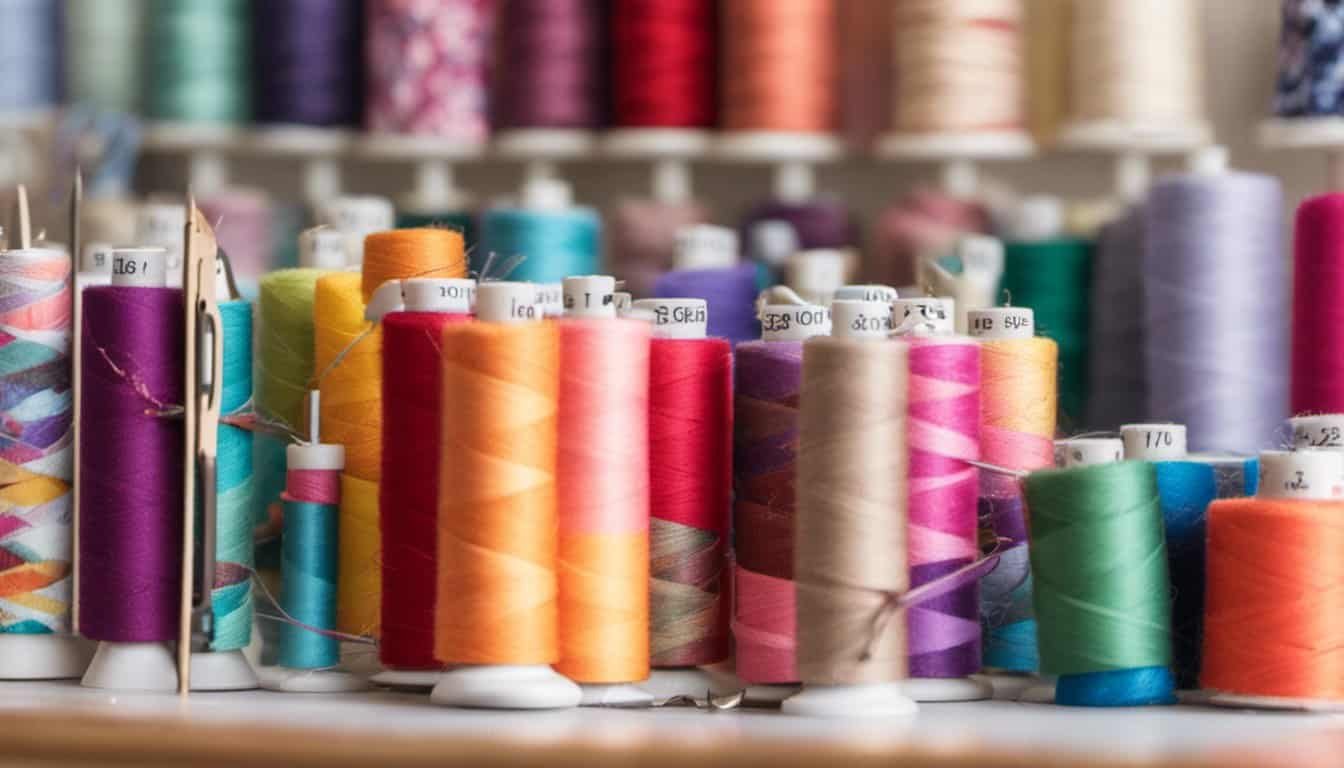
Stretch And Knit Fabrics
When working with stretch and knit fabrics, selecting the appropriate needle prevents fabric damage and ensures smooth stitching. I use Ballpoint Needles for knit fabrics like jersey and spandex because their rounded tips glide between threads without piercing them. Additionally, Stretch Needles are ideal for materials such as Lycra and elastane, providing flexibility and reducing skipped stitches. Using the correct needle type maintains the fabric’s integrity and extends the lifespan of your garments.
Denim And Leather
Denim and leather require robust needles to handle their thickness and density effectively. I prefer Denim Needles for heavyweight fabrics like jeans and canvas; their strong, tapered points penetrate multiple layers with ease. For genuine or synthetic leather, Leather Needles are essential as their wedge-shaped tips pierce without causing excessive tearing. Here’s a quick reference table for needle sizes:
| Needle Type | Recommended Size | Suitable Materials |
|---|---|---|
| Denim | 80/12 – 100/16 | Jeans, canvas, heavy cotton |
| Leather | 90/14 – 100/16 | Genuine leather, vinyl, faux leather |
Using the appropriate needle not only ensures clean stitches but also protects your sewing machine from unnecessary strain.
How To Change And Maintain Your Needle
Keeping your sewing machine needle in top condition ensures smooth stitching and extends your machine’s lifespan. Here’s how I change and maintain my needles effectively.
Step-By-Step Needle Replacement
- Turn Off the Machine: Ensure the sewing machine is unplugged to prevent accidents.
- Raise the Needle: Use the handwheel to move the needle to its highest position.
- Loosen the Needle Clamp: Insert a screwdriver into the needle clamp screw and turn it counterclockwise.
- Remove the Old Needle: Gently pull the needle upward and out of the needle bar.
- Insert the New Needle: Place the flat side of the needle facing the correct direction and push it firmly into the needle bar.
- Tighten the Clamp: Secure the needle by turning the screw clockwise until it’s snug.
- Test the Needle Position: Lower the presser foot and turn the handwheel to ensure the needle moves freely.
Needle Maintenance Tips
- Regular Inspection: Check needles for bends, dullness, or damage before each project.
- Use Proper Storage: Keep needles in a protective case to prevent bending and corrosion.
- Replace Frequently: Change needles after every 8-10 hours of sewing or when switching fabrics.
- Lubricate Moving Parts: Apply sewing machine oil to ensure smooth needle movement and reduce wear.
- Clean the Machine: Remove lint and debris around the needle area to prevent needle breakage and maintain performance.
Common Needle Problems And Solutions
Broken Needle
A needle breaks during sewing, stop the machine immediately to prevent thread jams or fabric damage. Replace the needle with a new one of the correct type and size.
Bent Needle
« Transform Your Projects with These Using Decorative Stitches: Ideas and Tips
Master How to Sew a Mock Flat Fell Seam in Just a Few Easy Steps »
A bent needle causes skipped stitches and uneven stitching. Remove it carefully, straighten if possible, or use a new needle to ensure smooth sewing.
Dull Needle
Using a dull needle results in rough edges and fabric snags. Regularly inspect needles for wear and replace them to maintain clean stitches and fabric integrity.
Incorrect Needle Type
An incorrect needle type can damage fabric or machine components. Always match the needle type to your fabric and project requirements to achieve optimal results.
Improper Needle Size
Using the wrong needle size leads to poor stitch formation and fabric puckering. Select a needle size appropriate for your fabric weight to ensure strong, even stitches.
Needle Not Threading Properly
Difficulty threading the needle disrupts the sewing process. Ensure the needle is correctly inserted and the threading path is clear, replacing the needle if necessary.
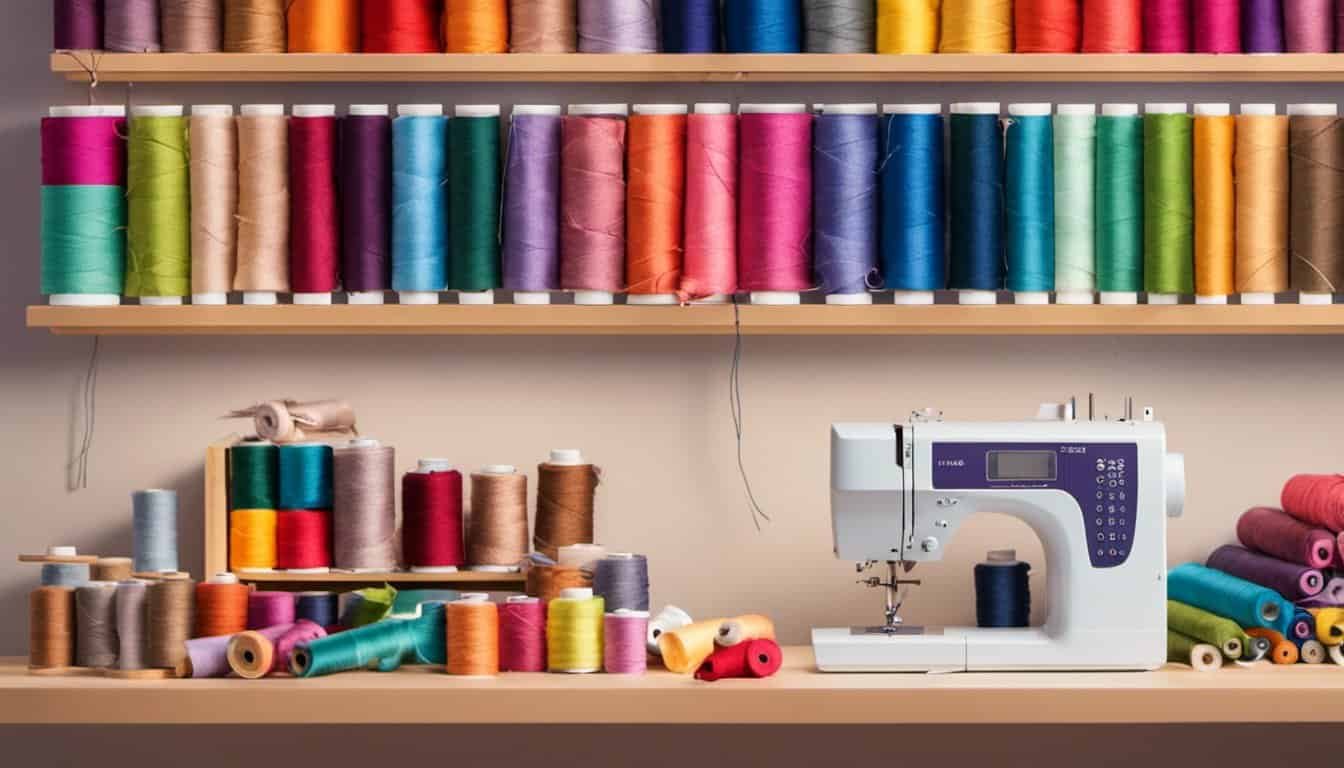
Needle Hitting Fabric
A needle hitting the fabric flat can cause excessive wear or fabric damage. Check the needle length and position, adjusting if needed to prevent contact with the fabric surface.
Skipped Stitches
Skipped stitches often result from a faulty needle or improper threading. Replace the needle and rethread the machine to restore consistent stitch quality.
Needle Burrs
Burrs on a needle interfere with smooth sewing and can break threads. Examine needles for imperfections and replace any that show signs of damage or wear.
Fabric Puckering
Puckering occurs when the needle doesn’t glide smoothly through the fabric. Use a ballpoint or appropriate needle type for the fabric to minimize puckering and maintain fabric appearance.
Thread Breakage
Frequent thread breakage is often caused by a damaged or incorrect needle. Inspect the needle for defects and ensure it matches your thread type to reduce breakage issues.
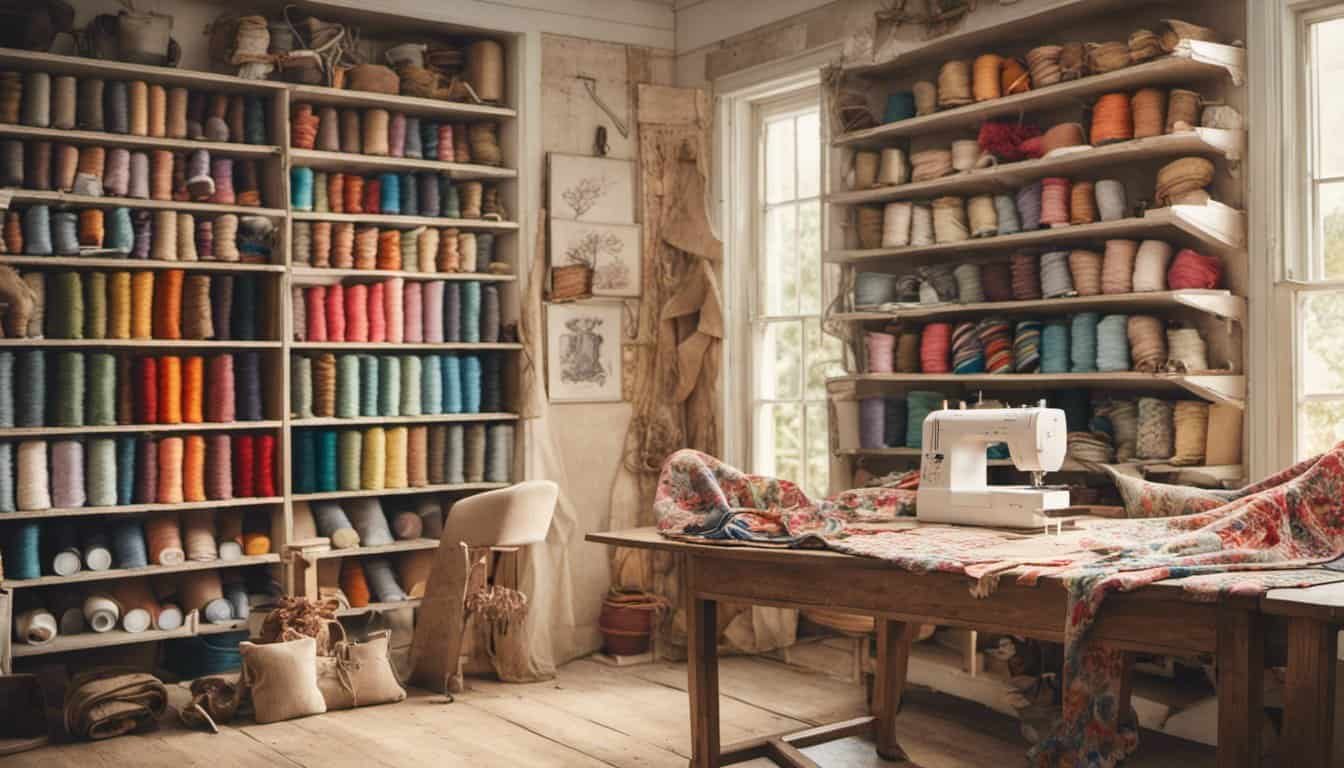
By addressing these common needle problems with the appropriate solutions, you can enhance your sewing experience and maintain the quality of your projects.
Conclusion
Choosing the right needle makes all the difference in my sewing projects It’s amazing how the correct needle can improve stitch quality and protect my fabrics By understanding the different types and sizes I feel more confident tackling any material Regular maintenance keeps my machine running smoothly and ensures every stitch is perfect With the tips I’ve shared picking the right needle is no longer a guesswork process I’m excited to see how these choices enhance my future creations and make sewing even more enjoyable














